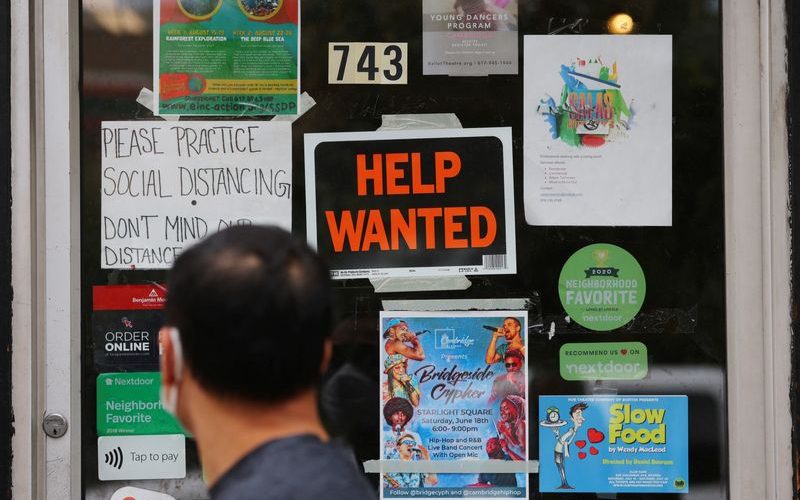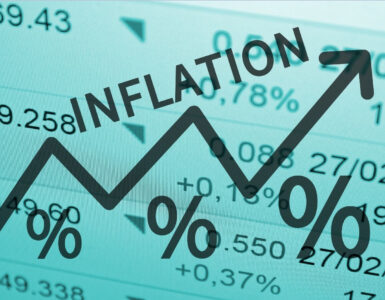Stock futures edge higher with jobs data in focus; October payrolls to show weaker job growth, easing wages; Starbucks jumps as solid U.S. growth offsets prolonged China weakness; Paypal slumps after muted holiday quarter forecast and Elon Musk to unveil Twitter layoffs as advertisers pause campaigns.
Five things you need to know before the market opens on Friday, November 4:
1. Stock Futures Edge Higher With Jobs Data In Focus
U.S. equity futures edged cautiously higher Friday, with investors looking to snap a four-day losing streak on Wall Street but hedging bets on an end-of-week rebound ahead of key jobs data prior to the start of trading.
Global stocks, however, are riding firm early gains Friday following reports that suggest China is preparing to ease one of its crucial Covid restrictions — penalties applied to airlines for brining in infected passengers — and that U.S. auditors had completed a review of China-based companies listed on American markets.
The reports provided a firm lift to stocks in Asia overnight, with Hong Kong’s Heng Seng index rising 5.4% to cap its best weekly gain in more than ten years, and the region-wide MSCI ex-Japan index rising 2.31% heading into the close of trading.
Stateside, focus remains firmly on the Labor Department’s October employment report, expected at 8:30 am Eastern time, which is likely to show the slowest pace of hiring in nearly two years, further cementing concerns of a near-term recession in the world’s biggest economy.
Those worries, of course, are set against the hawkish outcome from Wednesday’s Federal Reserve rate decision, during which Chairman Jerome Powell said it was ‘premature’ to consider a pause in future rate hikes given the searing pace of inflation and tightness in the labor markets.
Treasury bond yields remain firmly higher in the wake of his comments, although longer-term rates are holding firm, and trading south of their short-term counterparts, suggesting fixed income investors are bracing hard for a recession in 2023.
Oil prices were also on the move Friday, with WTI crude futures for December delivery rising $1.95 to $90.12 per barrel, largely on demand bets linked to reports of easing Covid restrictions in China, the world’s largest energy importer.
Heading into the start of the trading day on Wall Street, futures contracts tied to the S&P 500 are priced for a 19 point opening bell gain while those linked to the Dow Jones Industrial Average are priced for a 125 point bump. The tech-focused Nasdaq is priced for a modest 66 point advance.
In Europe, Britain’s FTSE 100 was marked 0.63% higher as the pound held near a two week low of 1.1223 following a warning from the Bank of England, which lifted its benchmark lending rate by 75 basis points to 3% yesterday — that the country is facing a deep and prolonged recession. The region-wide Stoxx 600 was marked 0.6% higher in early Frankfurt trading.
2. October Payrolls To Show Weaker Job Growth, Easing Wage Pressures
The U.S. economy likely added around 200,000 new jobs last month, according to forecasts ahead of Friday’ non-farm payroll report, a pace that indicates a marked slowdown from the hot summer market and suggests an easing in wage pressures heading into the final months of the year.
A pullback in hiring, while challenging for broader economic growth, remains a key plank in Federal Reserve Chairman Jerome Powell’s inflation fight, where average hourly wages are growing at a rate of 5% a year – even with more than 10.7 million unfilled positions in the job market as of the end of September.
“The broader picture is of an overheated labor market where demand substantially exceeds supply,” Powell told reporters in Washington earlier this week. “We keep looking for signs that sort of the beginning of a gradual softening is happening and maybe that’s there, but it’s not obvious to me because wages aren’t coming down, they’re just moving sideways at an elevated level.”
Average hourly wages are expected to ease to an annualized rate of 4.7%, but the monthly levels may stagnate as companies, particularly in the retail sector, ramp-up hiring plans heading into the holiday season.
3. Starbucks Jumps As Solid US Growth Offsets Prolonged China Weakness
Starbucks (SBUX) – Get Starbucks Corporation Report shares jumped higher in pre-market trading after the world’s largest coffee chain posted stronger-than-expected fourth quarter earnings Thursday as solid U.S. sales offset a prolonged slump in China traffic.
Starbucks said non-GAAP earnings for the three months ending in September, the group’s fiscal fourth quarter, fell 19% from last year to 81 cents per share, but firmly beat the Street as revenues rose 3.1% to $8.4 billion.
U.S. comparable sales were up 11% from last year as shops re-opened, while comps in China were down 16% amid the country’s extended Covid lockdowns. International comparable sales rose 7%, Starbucks said.
“During the pandemic and certainly in the last year, Starbucks has picked up consistent market share, both in our category and our ability to intercept traffic as a result of the strategic nature of our real estate multiple formats, and we certainly can’t avoid this conversation and not talk about the overwhelming success in revenue and how accretive drive-throughs have been,” interim CEO Howard Schulz told investors on a conference call late Thursday. “And so net-net, we’re highly concerned and humbled by the environment.”
Starbucks shares were marked 2.65% higher in pre-market trading to indicate a Friday opening bell price of $86.92 each.
4. PayPal Slumps After Muted Holiday Quarter Forecast
PayPal (PYPL) – Get PayPal Holdings Inc. Report shares slumped lower in pre-market trading after the online payments group forecast softer-than-expected holiday quarter revenues that marred a solid September quarter update.
PayPal posted a set of third quarter earnings figures that were largely ahead of Street forecasts, as revenues rose 12% to $6.85 billion, generating an adjusted bottom line of $1.08 per share, a tally that was 12 cents ahead of the consensus estimate.
Looking into the final three months of the year, however, PayPal said revenues would likely growth by 10%, a percentage point lower than its prior forecast, amid what CEO Daniel Schulman described as a “challenging macro environment, slowing e-commerce trends and an unpredictable holiday shopping season”
PayPal shares were marked 6.8% lower in pre-market trading to indicate an opening bell price of $71.34 each, a move that would extend the stock’s year-to-date decline to around 62.2%.
5. Elon Musk To Unveil Twitter Layoffs As Advertisers Pause Campaigns
Elon Musk, the new owner and CEO of Twitter, will unveil massive jobs cuts Friday as the billionaire Tesla (TSLA) – Get Tesla Inc. Report boss looks to pare costs and streamline operations following his $44 billion takeover last week.
An internal email, citing by multiple media companies, indicated the layoffs would begin Friday at 9 am Pacific time at the group’s San Francisco headquarters, as part of “an effort to place Twitter on a healthy path”. Around 3,700 jobs are expected to be eliminated, the reports suggest, while others are being told to return to full-time office work as early as next week.
At the same time, reports continue to suggest that major advertisers such as General Motors (GM) – Get General Motors Company Report, Mondelez (MDLZ) – Get Mondelez International Inc. Report, General Mills (GIS) – Get General Mills Inc. Report and Pfizer (PFE) – Get Pfizer Inc. Report have temporarily pulled their campaigns from the micro-blogging website amid concerns over Musk’s plans for lighter content moderation, making it even more difficult for Musk to grow platform revenues — and pay back the $13 billion he borrowed to seal the transaction — amid a broader retreat in global advertising spending.
Tesla shares, which have fallen more than 45% since Musk first made his ambitions to buy Twitter public, were marked 1.62% higher in pre-market trading to indicate an opening bell price of $218.79 each.
Source: The Street










